The universe has always fascinated us. Our desire to explore its vastness is the focus of watch designers who create moon-phase displays, meteorite dials and depictions of the starry firmament. In this excerpt from our WatchTime 2020 Special Design Issue, we showcase some of the most exciting astronomical newcomers.
HERMÈS ARCEAU L’HEURE DE LA LUNE
Hermès’ new watch combines two mother-of-pearl moons and a meteorite dial. One subdial for the time and a second subdial for the date circle around a movable central axis, yet always remain vertical while they rotate. The two moons are gradually covered by the subdials, so that their visible portions correspond to the lunar phases as seen by observers in the Northern and Southern Hemispheres. However, Hermès inverts the globe and positions the moon-phase for the Southern Hemisphere in the upper half of the dial. (For more details, click here.) Stainless steel, 43 mm, manufacture Caliber H1837 with moon-phase module by Chronode, automatic, limited edition of 100 pieces, $25,500.
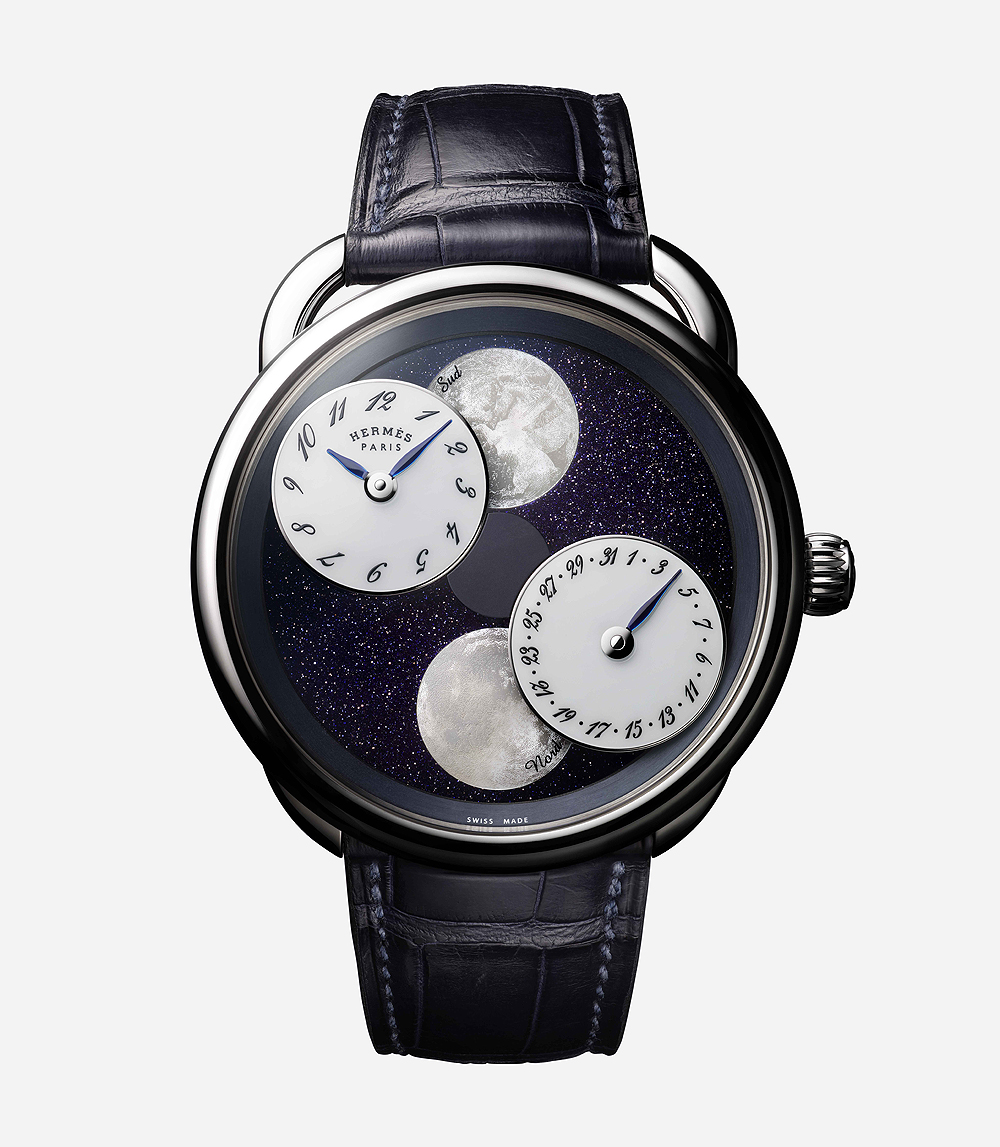
BOVET RÉCITAL 26 BRAINSTORM ONE
Bovet is shooting for new horological heights with the Récital 26 Brainstorm Chapter One, a masterpiece that combines a sapphire version of Bovet’s “writing desk” sloped case with an array of complications. Bovet’s patented, double-face flying tourbillon occupies a large aperture at the 6 o’clock position and serves as the seconds display. The hours and minutes, displayed by two golden hands, are positioned off center below 12 o’clock. Just above these hands is a three-dimensional, hemispherical moon-phase indicator, whose dome follows the curvature of the dial and whose surfaces are engraved and filled with Super-LumiNova on its lower sections. Two circular apertures reveal the current moon-phase on two circular aventurine glass plates for a strikingly realistic view of the moon in the starry sky. The big date display, whose sapphire units disk is in full view, appears in a circular window at 8 o’clock, and the power reserve – an astounding 10 days – is located at 4 o’clock. Sapphire and titanium, manufacture Caliber 17D04-SMP, hand-wound, bespoke version with enamel green quartz domed dial and bespoke engraving, $360,000.
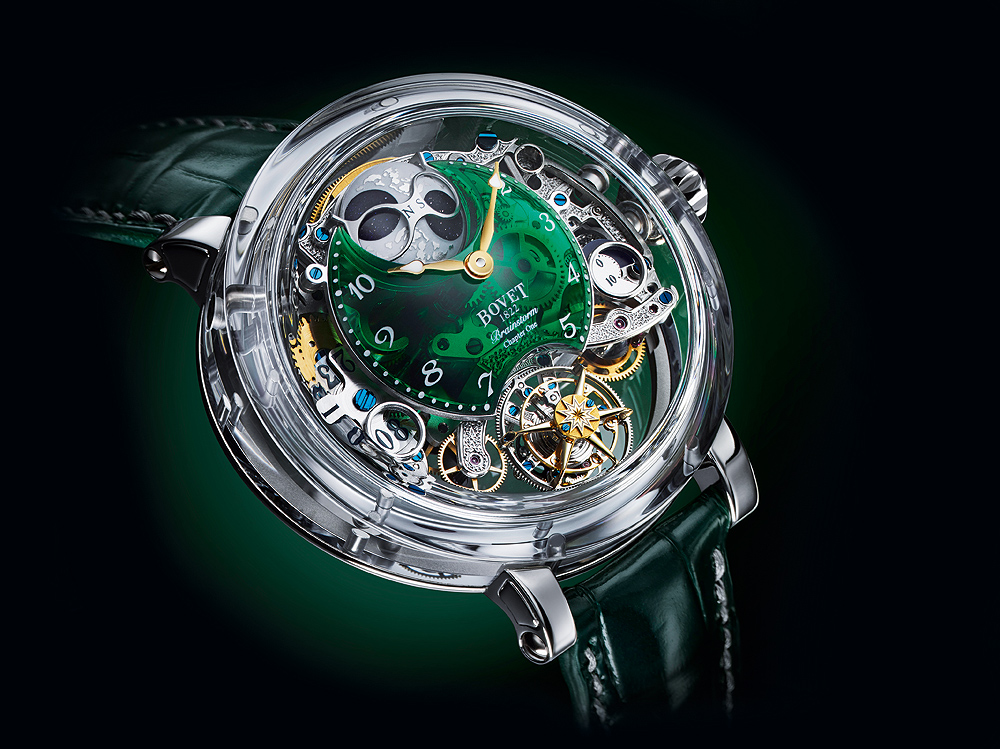
JAEGER-LECOULTRE RENDEZ-VOUS CELESTIAL
In this new “Northern Lights” edition, mother-of-pearl and multi-colored sapphires take center stage, uniting two of the crafts that Jaeger-LeCoultre has so thoroughly mastered – gem setting and hand painting. On the upper section of the dial, the curvy floral numerals – a signature of the Rendez-Vous collection – are graduated in size to form a crescent that hovers above the lower dial. Outlined by an elliptical band of rose gold, this lower section carries a hand-transferred imprint of a star chart, together with the signs of the Zodiac and names of the months. Displaying the night sky as it appears above Jaeger-LeCoultre’s home in the Vallée de Joux, the star chart shows the changing positions of the constellations in real time. The automatic mechanical movement Jaeger-LeCoultre Caliber 809/1 turns the disk counterclockwise in relation to the stars, almost imperceptibly, in step with the rotation of the Earth in 23 hours, 56 minutes and 4 seconds. Rose gold, manufacture Caliber 809/1, automatic, $101,000.
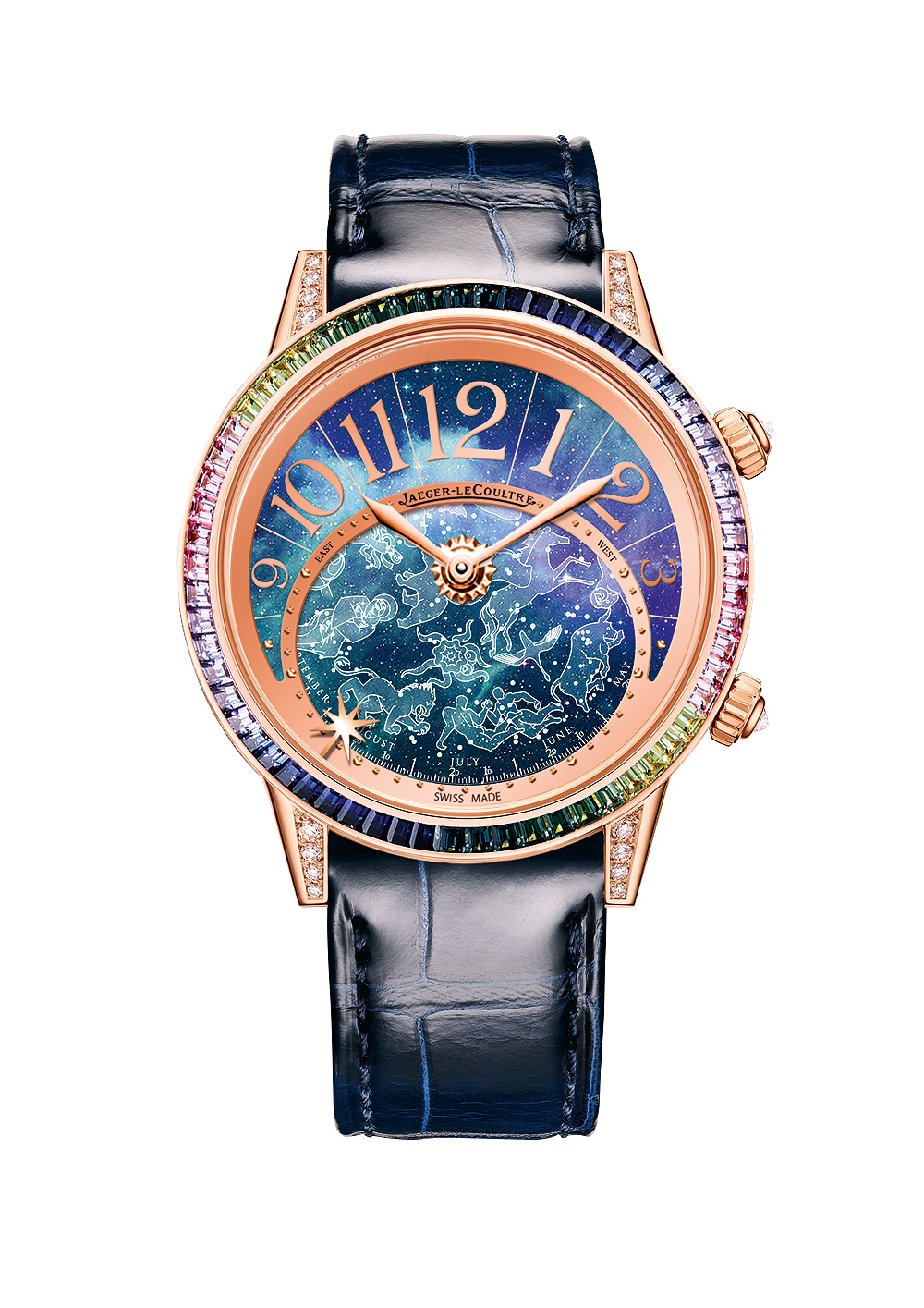
OMEGA SPEEDMASTER PROFESSIONAL
Fifty years ago, Apollo 11 astronaut Neil Armstrong stepped from the Apollo 11 Module Eagle onto the lunar surface, not only marking “one small step for [a] man, one giant leap for mankind,” but putting the Omega Speedmaster into the annals of history as the first wristwatch worn on the moon. Omega’s year-long celebration of this milestone has now culminated in the launch of a new special edition of the iconic “Moonwatch” outfitted with the recently revived Caliber 321, the first movement ever used in the Speedmaster in 1957. Platinum, 42 mm, three meteorite subdials, tachymeter scale in white enamel, CHF 55,000 (approx. $56,000).
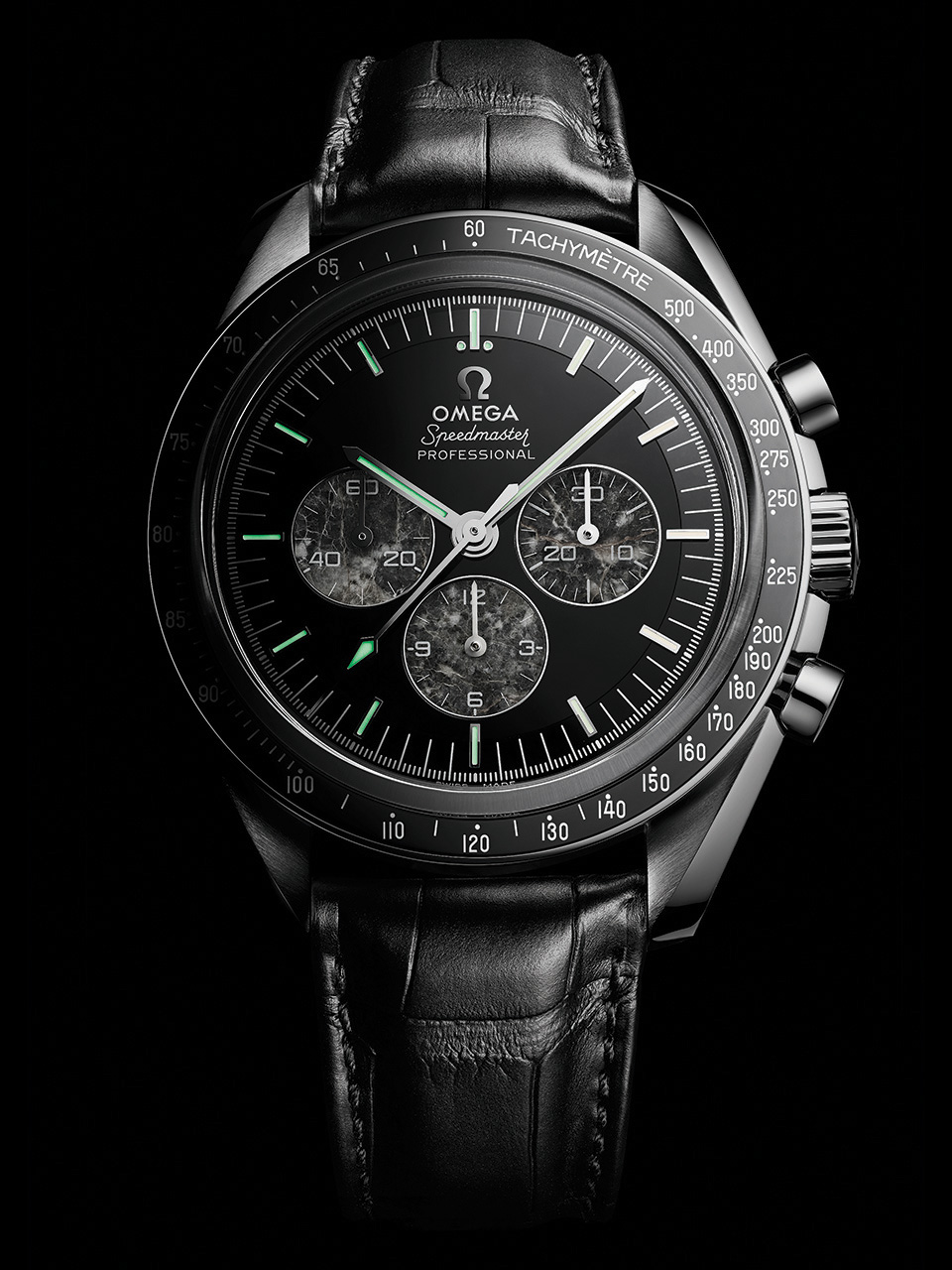
ROMAIN GAUTHIER PRESTIGE HMS STAINLESS STEEL
The Swiss watch creator Romain Gauthier fabricates the dials for this limited series of 10 watches from slices of a meteorite that was discovered in Australia in 1931. He inserts each mineral dial into a simple hand-wound watch with a manufacture movement that can be manually wound and set by turning a crown positioned flat against the back of the case. The concealed crown lets viewers focus their undivided attention on the meteorite dial’s attractively irregular pattern. Stainless steel, 43 mm, manufacture Caliber 2206 HMS, hand-wound, limited edition of 10 pieces, CHF 68,000.
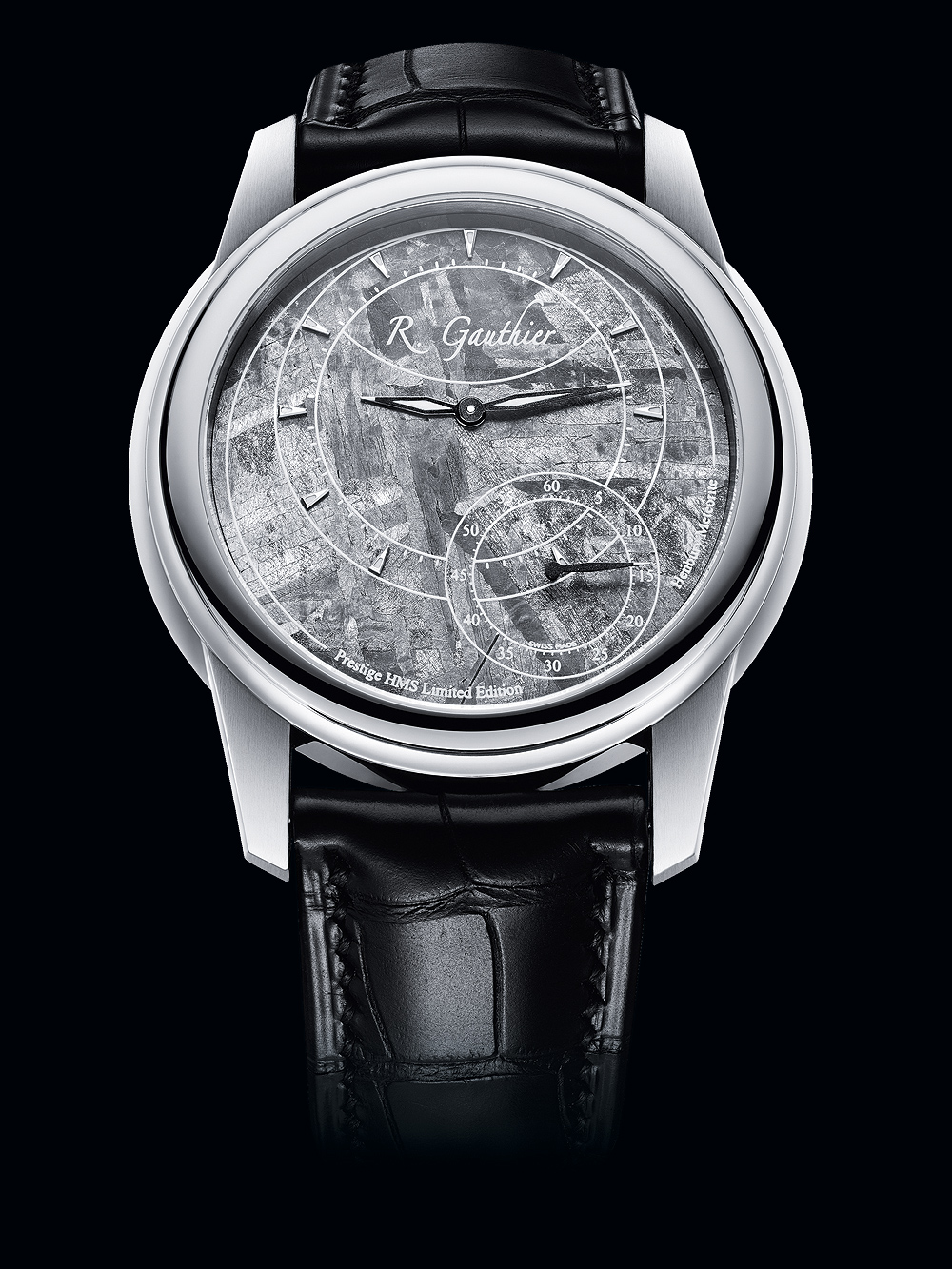
GIRARD-PERREGAUX BRIDGES COSMOS
One little globe in Girard-Perregaux’s Cosmos revolves around its axis once each day to indicate the time in a second time zone, while a second rotating orb progressively reveals the signs of the zodiac, and a tourbillon turns at 6 o’clock. The watch’s hands, the stars and the Earth’s continents emit a blue glow at night. Bands of light in the background suggest a time-lapse film of stars passing across the night sky. Titanium, 48 mm, manufacture Caliber GP09320-1098, hand-wound, CHF 345,000.
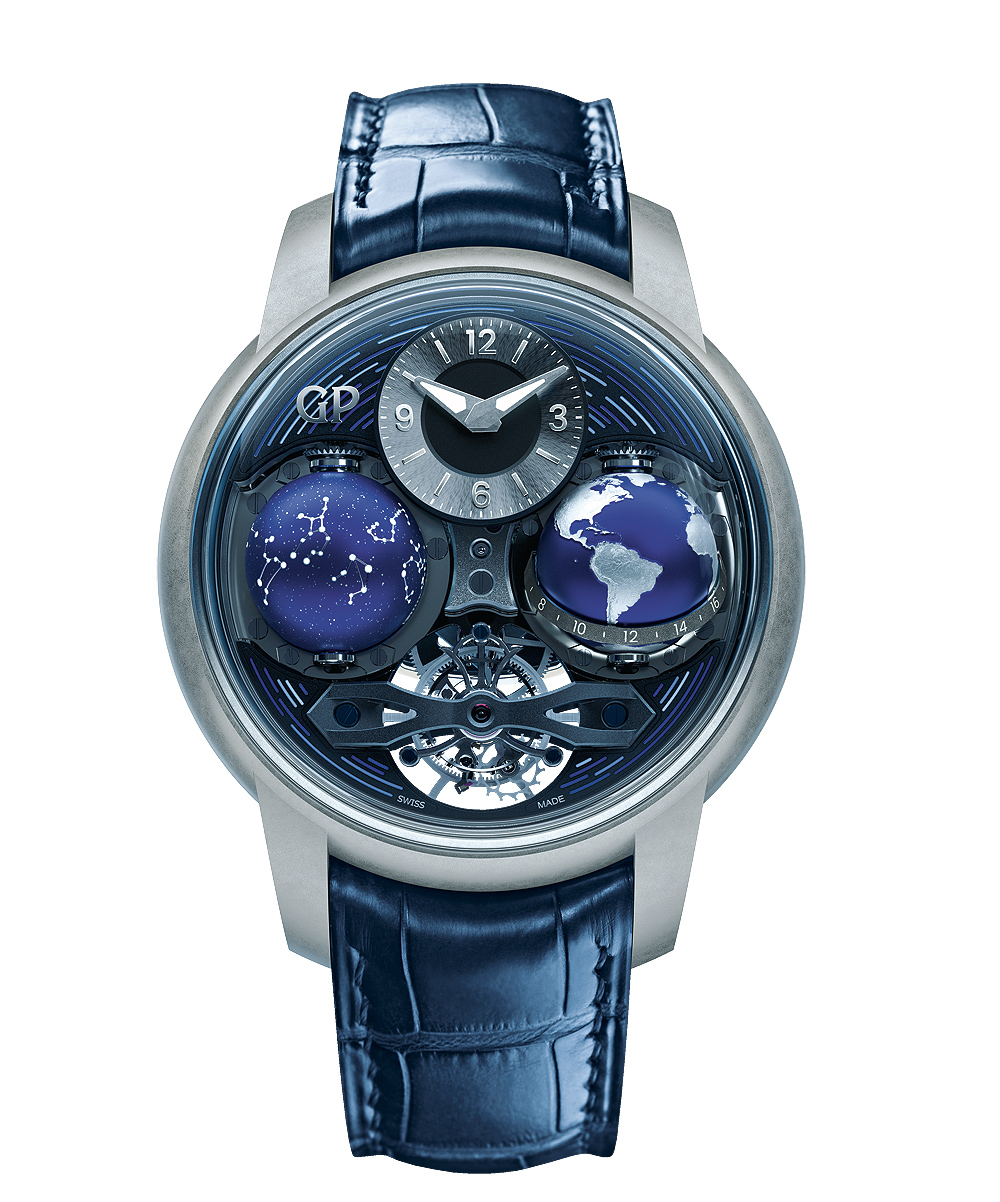
PATEK PHILIPPE NAUTILUS ANNUAL CALENDAR
The new Patek Philippe Annual Calendar Moon Phases Ref. 5726/1A in stainless steel now features a blue dial with the emblematic horizontally embossed motif, creating a subtle shading effect in which the bright blue at the center fades to black at the edges. The watch’s annual calendar mechanism, invented and patented by Patek Philippe in 1996, displays the day and month in two in-line windows at 12 o’clock and the date in a window at 6 o’clock; directly above the latter aperture is a 24-hour day-night indicator encircling a moon-phase display with extreme precision: it requires correction only once every 122 years. The baton hands are made of white gold and coated with luminous material. 40.4-mm steel case, manufacture Caliber 324 S QA LU 24H/303, $45,928.
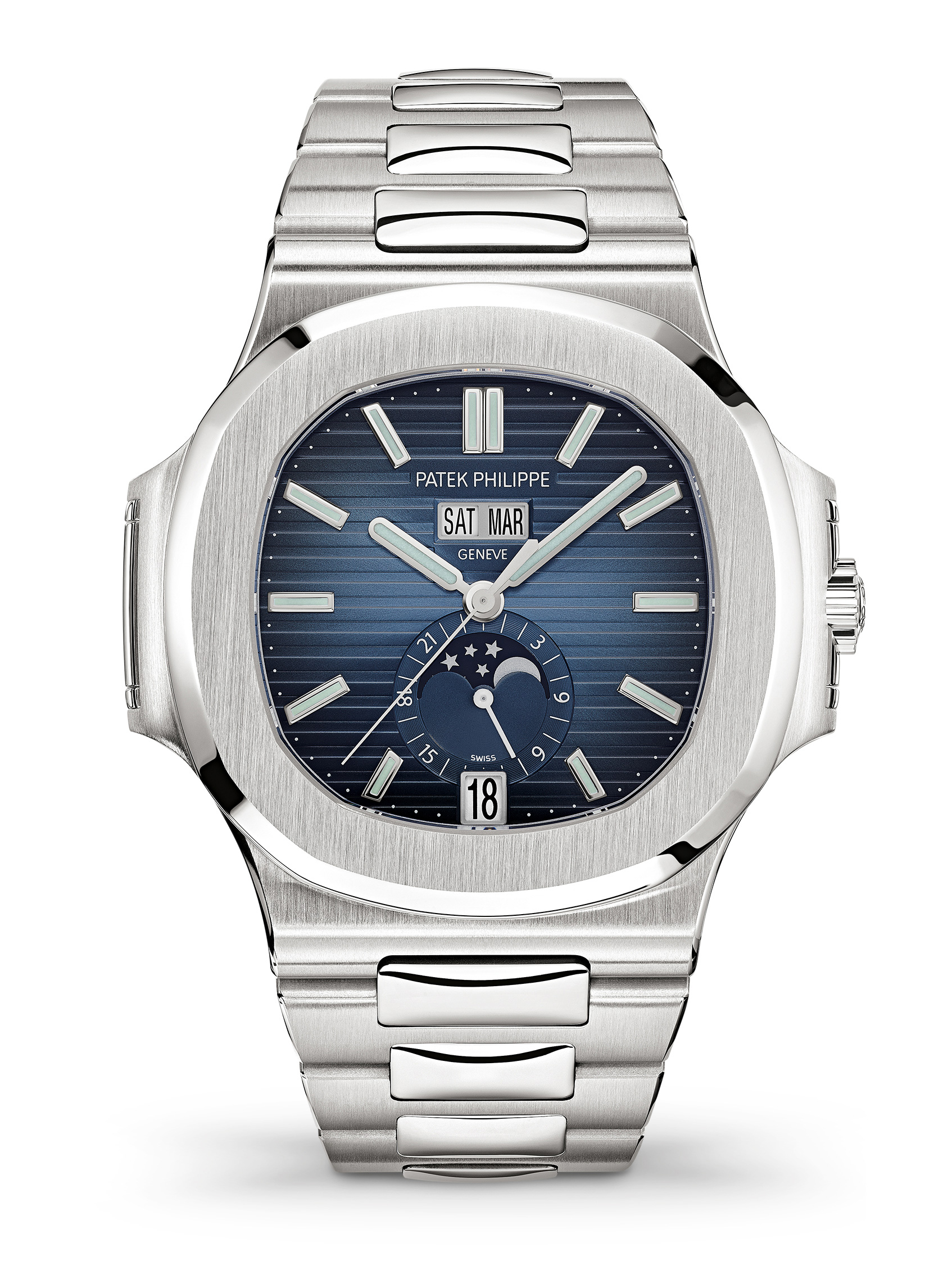
ROLEX GMT-MASTER II
This model with meteorite dial, white-gold case and three-row Oyster bracelet is one of several variations of the GMT-Master II released by Rolex in 2019. The dial’s uniquely patterned surface serves as the background for three hands that indicate the current time with chronometric precision and for an additional red hand that shows the time in a second time zone in 24-hour format. The blue-and-red “Pepsi” bezel can be turned in either direction to indicate the time in a third zone. 40 mm, manufacture Caliber 3285, automatic, chronometer, $38,400.
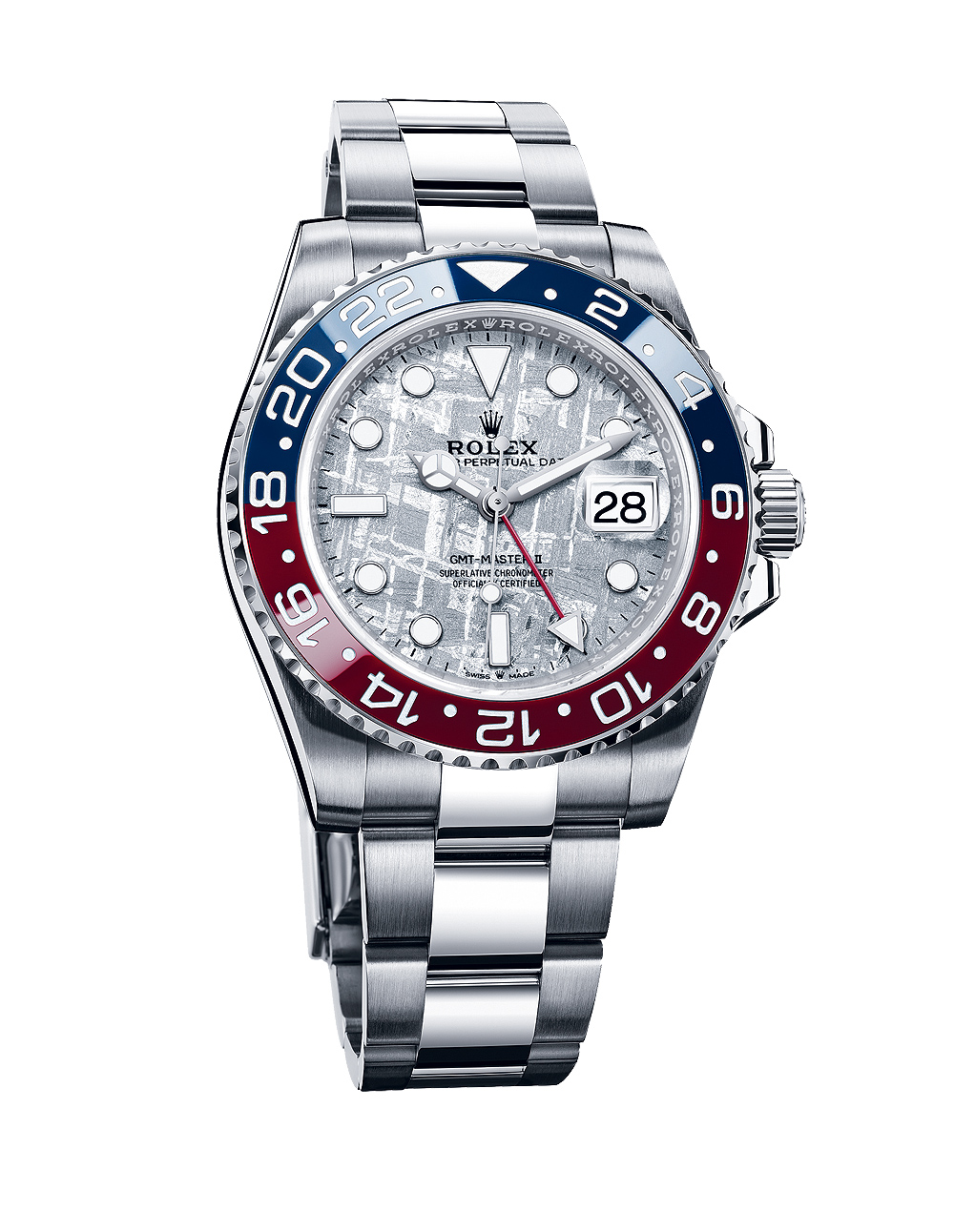

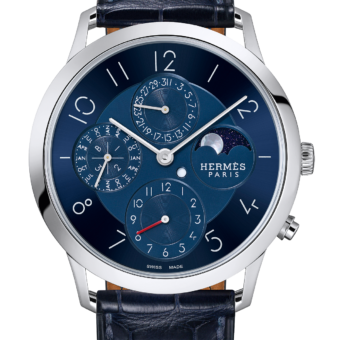
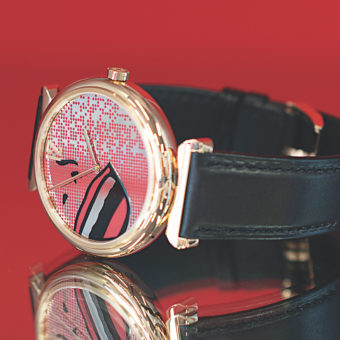

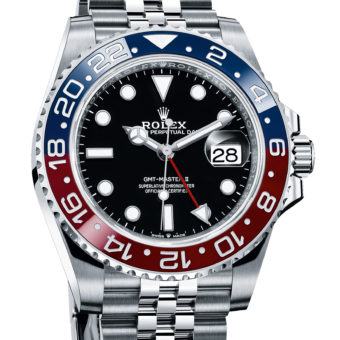

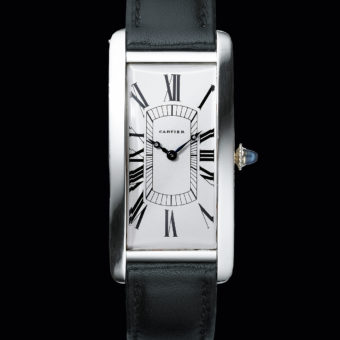
how can one talk about astronomically inspired watched and not mention Christiaan van der Klaauw?
I like the story on astronomically watches but what about the Ulysse Nardin Moonstruck or Patek Philippe 6102 Celestial
You did not mention De Bethune Starry Sky … a stunning work of art
The GP is the most interesting of all.
the price is to high
Just don’t mention the word ‘quartz’ in the review of the Bovet, at $360,000 no one will buy it!
Christiaan van der Klaauw makes the best astronomical time pieces. You guys never speak of this brand :(
Nice write up, only Neil Armstrong wasn’t wearing his speedmaster when he stepped on the moon, It was left aboard the eagle to serve as the time piece in place of a broken clock. . Buzz Aldrin was the first to wear the Omega on the moon, even thought he was the second one to step on it. It is our history America, and we must preserve it.
Sadly, Buzz’s Speedmaster was “lost” after shipment to the Smithsonian.
Any that mere mortals can afford?